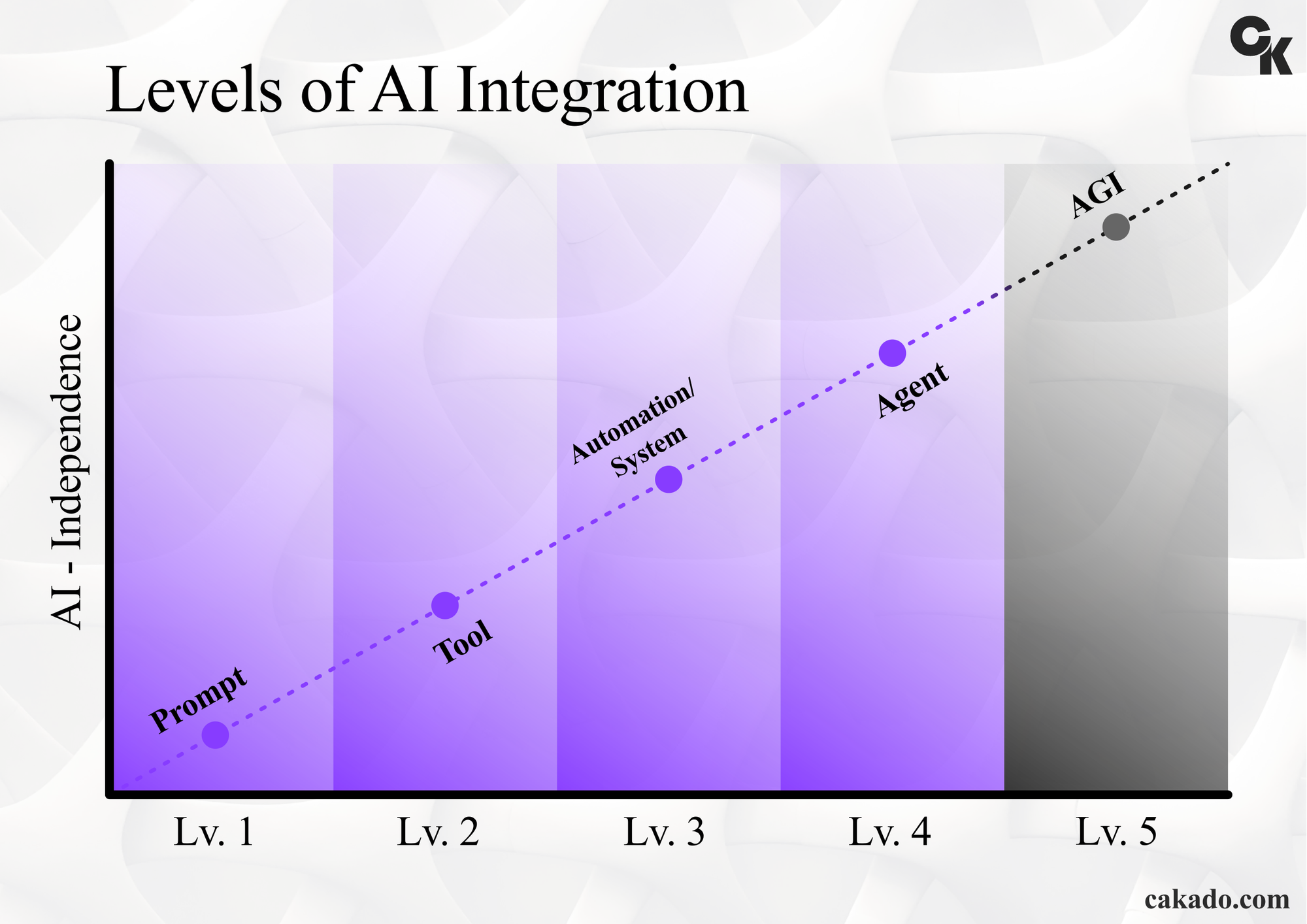5 levels of AI autonomy and integration
The degree of AI integration in companies varies greatly. Some companies are still in the initial stages of implementation, while others are already using fully AI-driven systems.

Artificial intelligence (AI) has evolved from a futuristic idea to a practical reality that helps companies increase their efficiency, optimize processes and drive innovation. However, the degree of AI integration in companies varies greatly. Some companies are still in the early stages of implementation, while others are already using fully AI-driven systems. In this blog post, we take a look at the different stages of AI integration in companies. Here, we limit ourselves to modern large language models (LLMs) in the field of artificial intelligence.

1. Prompting - The first approach to AI
The first step of AI integration often starts with the use of simple prompts and language models. This is the most basic form of interaction with a language model. An example of this first step could be the use of chatbots or virtual assistants to answer common customer queries. These systems are able to provide quick responses through predefined prompts based on the information they have received in advance.
At this stage, AI is still at a very rudimentary stage where it cannot make in-depth analyses or decisions, but can still provide useful support. Well-known examples are ChatGPT, or Gemini.
2. Tool - AI as a supporting tool
The next step is to use AI as a tool that supports specific tasks within an organization. In this phase, AI technologies are used for specialized use cases, e.g. for analyzing large amounts of data, making predictions or personalizing marketing campaigns. Companies use AI tools to improve workflows and make informed decisions.
An example of AI tools are recommendation engines, which are used in the e-commerce industry to make personalized product suggestions based on user behaviour. AI is a useful tool here, but it is not yet integrated into all company processes.
3. Automation - AI for process optimization
The next level of integration is about making processes more efficient through automation. AI-based systems are increasingly taking over tasks that were previously performed by humans. This ranges from automated data processing to fully automated warehouse management. Robotic process automation (RPA) and machine learning can be used in companies to perform routine tasks without human intervention, saving time and reducing errors.
Automation goes beyond simply performing tasks and can make decisions based on predefined parameters, drastically reducing human effort.
4. Agent - AI with toolbox
In this phase, AI goes one step further: it acts as an agent that not only provides information, but also makes complex decisions and executes tasks. An agent is a combination of language models and the ability to act. Roughly speaking, any model that is capable of performing tasks (e.g. surfing the web or creating reminders) is already an agent. There are practically no limits to the capabilities that agents can have. An agent that manages my calendar? An agent that answers customer queries? No problem at all.
Agents are currently all the rage. Even leading providers such as OpenAI are developing in this direction. The topic is still quite new, so a lot is still in development. However, there are already tools (e.g. n8n) or frameworks (e.g. LangChain) that can be used to create the first AI agents.
5th AGI - Artificial General Intelligence
One could argue that there is yet another level to AI autonomy (AGI). However, we will look at this topic in another blog post!
Conclusion
AI integration in companies is an ongoing process that ranges from simple applications to complex, cross-system solutions. Advances in AI technology are increasingly opening up new opportunities for companies to optimize their processes and create competitive advantages. It will be exciting to see how companies continue to integrate these technologies in the coming years and what new innovations will emerge from them.
What stage is your company at?
More on the topic:








